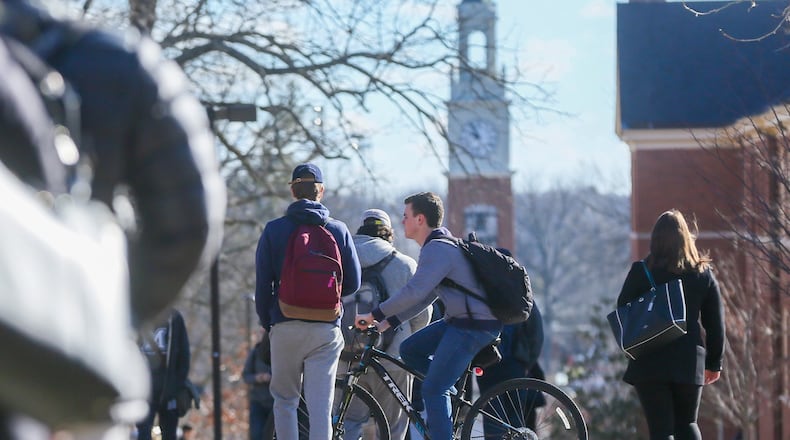Ohio State added 683 students, growing its spring enrollment by about 1.2 percent from 2016. Miami’s main campus grew by 414 students or 2.2 percent from last year, according to the university.
Miami’s enrollment increase is credited to the record setting sizes of incoming freshmen classes at the school, according to Susan Schaurer, assistant vice president for enrollment management and director of admissions. In fall 2015, Miami set a record with 3,806 incoming freshmen and fall semester 2016 had the second highest increase with 3,798, Schaurer said.
A retention rate upwards of 90 percent has helped to boost this spring’s enrollment, Schaurer said.
“The demand has certainly increased for a Miami education,” Schaurer said. “We’re really excited about that.”
Schaurer expects Miami’s enrollment success to continue as the university has already received more than 30,000 applications for the fall 2017 semester, setting yet another record.
Miami University is Butler County’s largest employer, with nearly 3,300 full-time employees at its main Oxford campus, and Hamilton and Middletown campuses. Total university employment is more than 4,000 workers, including part-time employees, according to Miami.
The University of Cincinnati’s spring enrollment grew by the slimmest margin, 0.4 percent, or 191 students.
Enrollment at the University of Dayton and Wright State University declined this semester.
Officials at UD and WSU said a trend in students graduating faster in the fall semester and decrease enrollment of international students has played a part in the decrease in numbers for the spring semester.
Spring enrollment is slowly becoming more affected by fall graduation rates, said Jason Reinoehl, UD vice president for enrollment management. The number of students receiving their degrees during fall commencement has slowly increased over the years and ticked up slightly from 649 in 2015 to 680 in 2016, according to UD.
“Students are graduating faster,”Reinoehl said.”It’s an interesting phenomenon but its a good thing.”
A decline in the number of international students is having an impact on UD and WSU, officials said.
Foreign students who would have started in the spring may have decided to go elsewhere following the election of President Donald Trump, Reinoehl said. Wright State provost Tom Sudkamp has also warned about a looming "Trump effect" on international enrollment.
Officials at both universities said that politics and scholarship funds in other countries can also determine whether an international student can come to the U.S.
Wright State’s international enrollment in the fall declined by more than 400 students. Most of the students WSU lost were from Saudi Arabia because of a scholarship that is no longer offered there, officials have said.
“Much of that drop is attributable to the carry over effect we experienced in the international student decline from fall enrollment,” spokesman Seath Bauguess said.
About the Author
